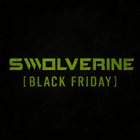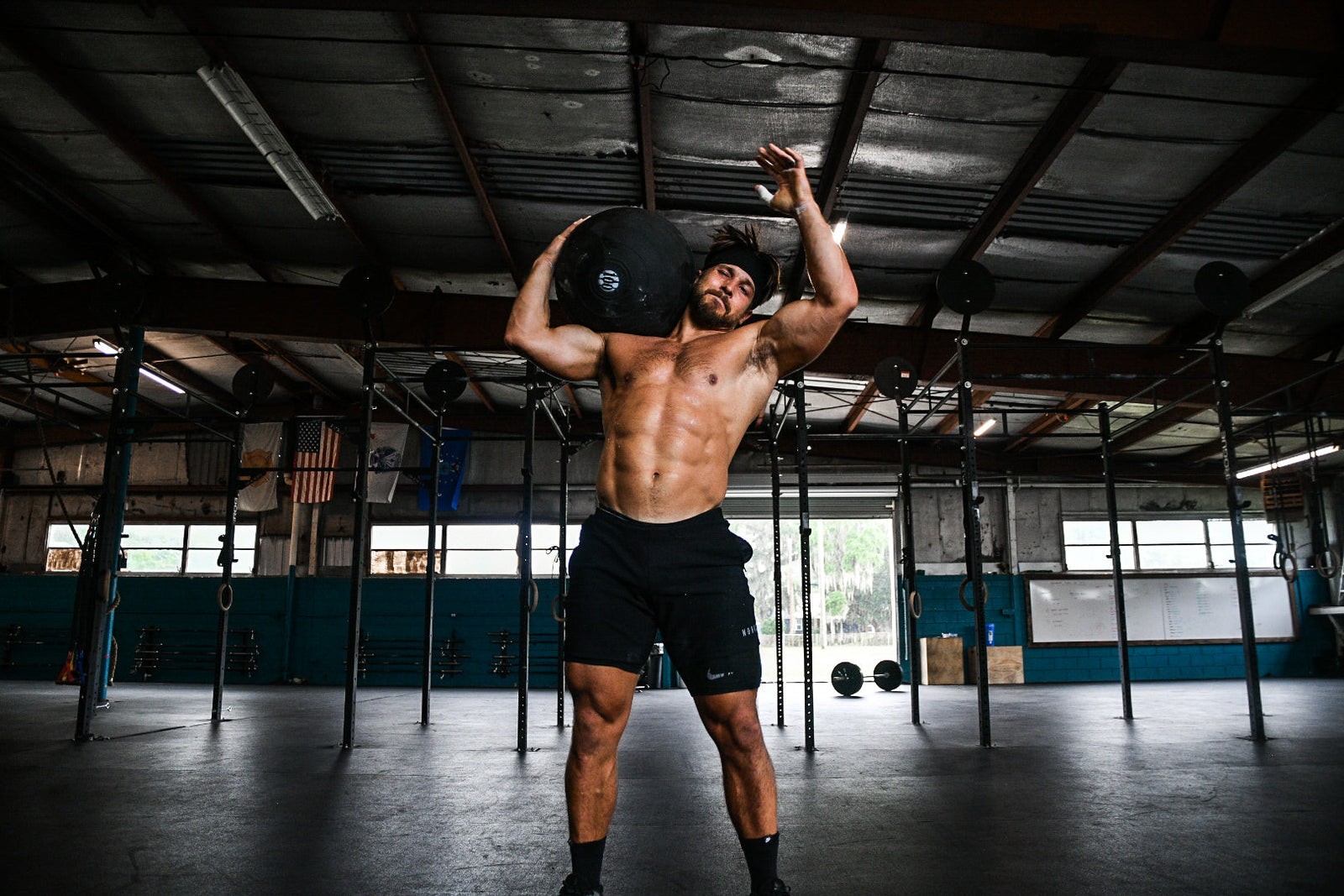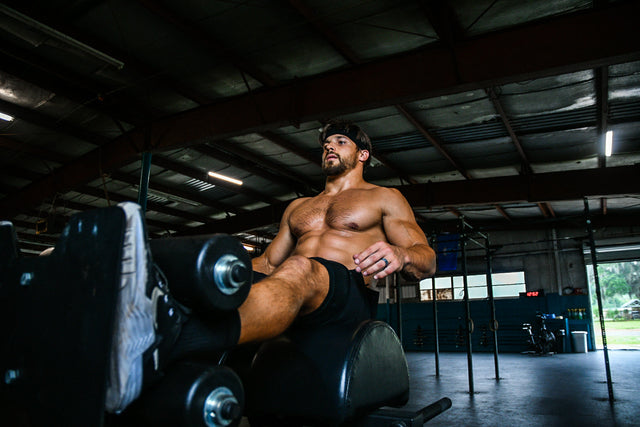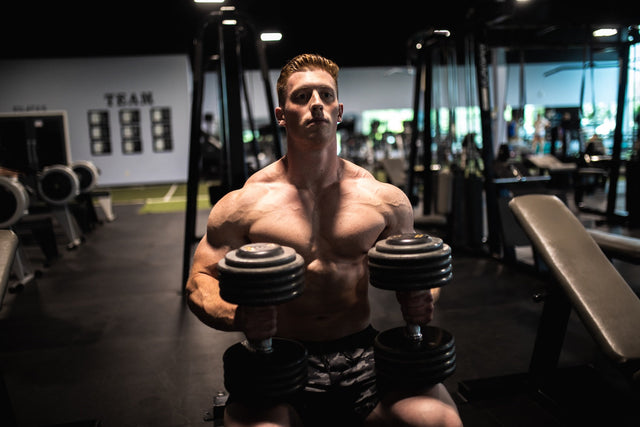In the world of performance enhancement, two names often arise in heated discussions: Testosterone and Proviron. Both are celebrated for their unique benefits, but which one truly reigns supreme? As athletes and fitness enthusiasts continually seek ways to amplify their vitality and push their limits, understanding the distinctions and advantages of these compounds is crucial. Testosterone, the powerhouse hormone, is often praised for its anabolic properties and significant role in muscle growth, recovery, and overall energy levels. On the other hand, Proviron presents a fascinating alternative, known for its ability to enhance free testosterone levels and improve physical performance without the bulk of additional mass.
This article delves deep into the characteristics, benefits, and potential downsides of both Testosterone and Proviron, ultimately helping you make an informed choice. Join us as we explore which of these contenders might be best suited to elevate your performance and reignite your vitality.
Understanding Testosterone and Proviron: An Overview
In the realm of performance enhancement and vitality, testosterone and Proviron are two prominent players often discussed amongst athletes and fitness enthusiasts. Both compounds have carved out their niche, offering distinct benefits that cater to different needs and goals. To appreciate their respective strengths, it is essential to understand their fundamental nature and mechanisms.
Testosterone, a naturally occurring hormone predominantly produced in the testes, plays an indispensable role in male physical development and overall well-being. It is crucial for the development of male secondary sexual characteristics, muscle mass, bone density, and the regulation of mood and energy levels. Synthetic testosterone, available in various forms such as injections, gels, and patches, is used in hormone replacement therapy (HRT) to address deficiencies and enhance physical performance.
Proviron, on the other hand, is a synthetic anabolic-androgenic steroid (AAS) derived from dihydrotestosterone (DHT). Unlike testosterone, Proviron does not convert to estrogen, making it a unique candidate for performance enhancement without the risk of estrogen-related side effects. Primarily used to treat low testosterone levels, Proviron is also popular among bodybuilders and athletes for its ability to increase free testosterone levels and enhance physical performance.
“Proviron (mesterolone) is often used for its anti-estrogenic properties and its ability to increase the ratio of free to bound testosterone.”
— William Llewellyn, Anabolics
Understanding the distinct characteristics and mechanisms of testosterone and Proviron sets the stage for a deeper exploration of their benefits and potential downsides. By comparing these compounds, individuals can make more informed decisions about which one aligns best with their performance and vitality goals.
The Role of Testosterone in Performance and Vitality
Testosterone is often hailed as the quintessential male hormone due to its critical role in male physiology and overall vitality. Its influence extends far beyond the development of secondary sexual characteristics, encompassing various aspects of physical and mental well-being.
Muscle Growth and Strength
One of the most significant roles of testosterone is its anabolic effect on muscle growth. It stimulates protein synthesis within muscle cells, leading to increased muscle mass and strength. This is why testosterone is a staple in bodybuilding and athletic circles, where muscle hypertrophy and enhanced physical performance are paramount.
“Testosterone promotes muscle hypertrophy by increasing muscle protein synthesis and satellite cell activation.”
— Dr. Shalender Bhasin, The New England Journal of Medicine
Energy, Libido, and Mental Clarity
Low testosterone levels are often associated with fatigue, decreased motivation, and low libido. Testosterone replacement therapy (TRT) helps restore hormone levels to their optimal range, which improves mood, energy, and quality of life. This is especially helpful for aging men who experience a natural decline in testosterone production.
Bone Density and Injury Prevention
Testosterone also supports bone health by promoting bone mineral density. This is particularly important for athletes engaged in weight-bearing activities, where bone strength plays a vital role in injury prevention and long-term performance.
“Men with low testosterone levels are at greater risk for osteoporosis and fractures, highlighting the hormone’s role in bone integrity.”
— Dr. Michael Irwig, Current Opinion in Endocrinology
Proviron: What It Is and How It Works
Proviron (mesterolone) is a unique anabolic-androgenic steroid that offers distinct advantages over other compounds, particularly in body composition management and hormonal balance.
Free Testosterone Enhancement
One of Proviron's most sought-after effects is its ability to increase free testosterone by binding to sex hormone-binding globulin (SHBG). This interaction frees up more testosterone to exert its physiological effects—enhancing strength, libido, and well-being.
“By displacing testosterone from SHBG, mesterolone increases the biologically active portion of testosterone.”
— Dr. Margo Kane, Clinical Pharmacology & Therapeutics
No Estrogen Conversion
Another major benefit of Proviron is its non-aromatizing nature. Unlike many other steroids, it does not convert to estrogen, eliminating the risk of:
-
Gynecomastia
-
Water retention
-
Fat gain in estrogen-sensitive areas
This property makes it ideal during cutting cycles, where muscle definition and vascularity are desired.
Lean Physique and Muscle Hardness
Although Proviron does not significantly increase muscle mass, its mild androgenic activity helps:
-
Enhance muscle density
-
Improve vascularity
-
Maintain strength while staying within weight classes (ideal for combat sports or weight-category athletes)
“Proviron is often used during contest preparation to promote muscle hardness and reduce estrogen-induced bloating.”
— Anthony Roberts, Anabolic Steroids: Ultimate Research Guide
Comparing the Effects of Testosterone and Proviron
When comparing the effects of testosterone and Proviron, it is essential to consider their distinct mechanisms of action and the specific benefits they offer. Both compounds have unique strengths, making them suitable for different goals and performance strategies.
Testosterone: Potent Anabolic Effects
Testosterone is renowned for its powerful anabolic properties, making it a cornerstone in muscle-building and strength-enhancing regimens. It increases muscle protein synthesis, drives hypertrophy, and enhances muscle recovery, allowing for more frequent and intense training sessions.
“Testosterone’s anabolic potential stems from its ability to stimulate muscle protein synthesis and satellite cell activation.”
— Dr. Shalender Bhasin, The Journal of Clinical Endocrinology & Metabolism
Additionally, testosterone supports mental clarity, energy, mood stability, and libido. These systemic benefits make it highly effective for addressing fatigue, low motivation, and overall vitality—key areas that impact both performance and quality of life.
Proviron: Subtle Yet Strategic Enhancement
In contrast, Proviron offers a more targeted approach. Its main mechanism is binding to sex hormone-binding globulin (SHBG), freeing more active (free) testosterone. This promotes strength, mood, and libido without significantly altering muscle mass.
“Proviron increases the proportion of unbound testosterone, thereby intensifying androgenic signaling without aromatization.”
— Anthony Roberts, Anabolic Steroid Research Guide
Unlike testosterone, Proviron does not convert to estrogen, eliminating the risk of side effects like:
-
Water retention
-
Gynecomastia
-
Fat gain in estrogen-sensitive areas
Its mild androgenic nature also promotes muscle hardness and vascularity—ideal for athletes who need strength and definition without gaining size.
Benefits of Testosterone for Athletes and Bodybuilders
Muscle Growth and Strength
One of testosterone’s hallmark benefits is its capacity to drive muscle hypertrophy. By increasing nitrogen retention and protein synthesis, testosterone supports:
-
Accelerated muscle growth
-
Enhanced strength output
-
Improved body composition
“Testosterone improves strength by increasing the cross-sectional area of muscle fibers and enhancing neuromuscular efficiency.”
— Dr. Kevin Tipton, European Journal of Applied Physiology
Faster Recovery
Testosterone reduces muscle damage markers and speeds up tissue repair, allowing athletes to bounce back faster after intense training. This is crucial for maintaining volume, frequency, and progression without risking overtraining or chronic fatigue.
Boost in Vitality and Motivation
TRT (testosterone replacement therapy) has been shown to significantly improve:
-
Energy levels
-
Motivation
-
Sexual function
-
Mental sharpness
These benefits are particularly impactful for older athletes or those experiencing symptoms of hypogonadism.
“Men undergoing TRT report improvements in vigor, mood, and libido within weeks of treatment.”
— Dr. Abraham Morgentaler, Reviews in Urology
Advantages of Proviron for Enhancing Performance
While Proviron is not a mass-gainer, its value lies in its hormonal modulation and its capacity to complement anabolic regimens or serve as a mild solo agent for specific goals.
Elevated Free Testosterone
By binding SHBG, Proviron increases the availability of free testosterone, the bioactive form of the hormone responsible for:
-
Enhanced libido
-
Improved mental clarity
-
Better physical output and muscle function
“Approximately 98% of testosterone is bound in the blood; Proviron can shift this balance, making more testosterone available for receptor activation.”
— Dr. Richard Auchus, Steroids and Hormonal Research
No Estrogenic Conversion
Since Proviron is a DHT derivative, it doesn’t aromatize to estrogen. This is ideal during:
-
Cutting phases
-
Prep weeks for competition
-
Stacks requiring estrogen control without additional aromatase inhibitors
Lean Physique and Vascularity
Proviron enhances muscle density, definition, and vascularity without increasing muscle mass—making it an asset in:
-
Weight-class sports
-
Physique sports (men’s classic, physique, or figure)
-
Athletes who prioritize strength-to-weight ratio
Potential Side Effects of Testosterone and Proviron
While both testosterone and Proviron offer valuable benefits for enhancing performance and vitality, understanding their potential side effects is essential for safe and effective use. Awareness of the risks can help individuals make more informed choices and implement strategies to mitigate adverse outcomes.
Side Effects of Testosterone
Despite its widespread use, testosterone therapy can produce several side effects—especially when misused or taken without medical supervision.
1. Suppression of Natural Testosterone Production
One of the most significant concerns with exogenous testosterone is hypothalamic-pituitary-gonadal (HPG) axis suppression. High levels of administered testosterone signal the body to halt its natural production, often leading to:
-
Testicular atrophy
-
Decreased sperm count
-
Post-cycle hormonal crashes
“Exogenous testosterone inhibits gonadotropin secretion, which suppresses endogenous testosterone production and spermatogenesis.”
— Dr. Mohit Khera, The Journal of Urology
2. Estrogenic Side Effects (Aromatization)
Testosterone can convert into estradiol, a potent form of estrogen, through aromatase enzymes. This may result in:
-
Water retention
-
Gynecomastia (male breast tissue development)
-
Fat gain in estrogen-prone areas
To control these effects, many users incorporate aromatase inhibitors (AIs) like anastrozole.
3. Androgenic Side Effects
These include:
-
Acne and oily skin
-
Accelerated hair loss (especially in those genetically predisposed to male pattern baldness)
-
Increased aggression or mood swings
“Androgenic effects vary by genetic predisposition and are more pronounced with higher doses or longer durations of testosterone therapy.”
— Dr. Richard Clark, Endocrinology and Metabolism Clinics
Side Effects of Proviron
While Proviron (mesterolone) is considered milder than testosterone, especially in terms of anabolic effects, it is not devoid of risks.
1. Liver Toxicity
As an oral DHT-derived steroid, Proviron is metabolized by the liver. Though not as hepatotoxic as alkylated compounds, long-term or high-dose usage may still stress liver function.
“Oral androgens, including mesterolone, pose a risk for hepatotoxicity, especially with chronic administration.”
— Dr. William Llewellyn, Anabolics
Recommendation: Periodic liver function tests (LFTs) and avoidance of alcohol or other hepatotoxic substances during use.
2. Cholesterol Imbalance
Proviron may reduce HDL (good cholesterol) and increase LDL (bad cholesterol), contributing to potential cardiovascular strain over time.
“Mesterolone and similar orals can negatively influence lipid profiles, elevating atherogenic risk factors.”
— Dr. Harrison Pope, Mayo Clinic Proceedings
Mitigation Strategies:
-
Monitor lipid panels regularly
-
Adopt a heart-healthy diet (high in omega-3s and fiber)
Post-Cycle Therapy (PCT) for Testosterone and Proviron
Post-cycle therapy (PCT) is essential for restoring natural testosterone production and minimizing the risk of hormonal imbalances, particularly after the use of exogenous anabolic compounds. While testosterone suppresses the hypothalamic-pituitary-gonadal (HPG) axis significantly, Proviron is less suppressive but still warrants consideration in longer or stacked cycles.
Why PCT Is Necessary
When you introduce external androgens, your body reduces or shuts down its own testosterone production. Abrupt discontinuation can lead to:
-
Hormonal crashes
-
Low libido
-
Mood swings
-
Muscle loss
-
Fatigue and depression
“Failure to implement PCT can lead to prolonged hypogonadism, with symptoms persisting for months after discontinuation.”
— Dr. Shalender Bhasin, The Journal of Clinical Endocrinology & Metabolism
PCT After Testosterone Cycles
Standard PCT Protocol (After Testosterone Use)
-
Start: 3–5 days after last testosterone injection (if using short esters like Test Prop); 14–21 days after last injection for long esters (e.g., Test Enanthate or Cypionate)
-
Duration: 4–6 weeks
Recommended PCT Stack
| Compound | Dosage | Duration |
|---|---|---|
| Clomid (Clomiphene Citrate) | 50 mg/day (weeks 1–2), then 25 mg/day (weeks 3–4) | 4 weeks |
| Nolvadex (Tamoxifen Citrate) | 20 mg/day | 4 weeks |
| DHEA | 100 mg/day | 4–6 weeks |
| ZMT (Swolverine) | 6 capsules/night | Ongoing for recovery and sleep support |
“Combining SERMs like Clomid and Nolvadex improves outcomes by stimulating LH/FSH while blocking estrogen receptors.”
— Dr. Michael Scally, Endocrine Reviews
PCT After Proviron-Only Use
Is PCT Necessary?
For short-term or solo Proviron use, PCT is typically not required due to its low suppressive nature. However, in longer cycles (6+ weeks) or when Proviron is stacked with suppressive compounds, a mild PCT is advisable.
Suggested Mild PCT (for Proviron or bridge cycles)
| Compound | Dosage | Duration |
|---|---|---|
| Tamoxifen | 10–20 mg/day | 2–4 weeks |
| DHEA | 50–100 mg/day | 4 weeks |
| ZMT | 6 capsules/night | Daily for recovery, stress, and libido |
PCT After a Testosterone + Proviron Stack
When stacking testosterone with Proviron, the PCT should mirror standard testosterone protocols, as testosterone remains the dominant suppressive compound.
Enhanced Recovery PCT Protocol
| Compound | Dosage | Duration |
|---|---|---|
| Clomid | 50 mg/day (weeks 1–2), 25 mg/day (weeks 3–4) | 4 weeks |
| Nolvadex | 20 mg/day | 4–6 weeks |
| DHEA | 100 mg/day | 4–6 weeks |
| ZMT | 6 capsules/night | Nightly |
You may also consider adding:
-
Ashwagandha extract (500–600 mg/day): for cortisol control and mood
-
Vitamin D3 (5,000 IU/day): to support hormone synthesis
-
Krill Oil or Omega-3s: to counter lipid imbalances and support cardiovascular health
Blood Work Recommendations
Pre-, intra-, and post-cycle blood panels are critical for monitoring:
-
Total and free testosterone
-
Estradiol (E2)
-
LH & FSH
-
SHBG
-
Liver enzymes (AST/ALT)
-
Lipid profile
“Routine lab work ensures recovery is proceeding as expected and prevents long-term endocrine disruption.”
— Dr. Thomas O’Connor, Anabolic Doc
How to Choose Between Testosterone and Proviron for Your Goals
Choosing the right compound depends on your performance goals, health status, and tolerance for side effects. Each offers unique benefits:
When to Choose Testosterone
✅ Ideal for:
-
Maximizing muscle hypertrophy
-
Boosting strength and recovery
-
Improving mood, libido, and vitality
Testosterone is optimal for those who:
-
Are pursuing bulking cycles
-
Require significant anabolic support
-
Are undergoing medically supervised TRT
Note: Consider PCT protocols and estrogen control strategies to offset suppression and aromatization.
When to Choose Proviron
✅ Ideal for:
-
Increasing free testosterone
-
Avoiding water retention and estrogenic issues
-
Maintaining weight class or achieving a lean aesthetic
Proviron is best suited for:
-
Cutting cycles
-
Physique athletes
-
Individuals stacking it with testosterone to enhance androgenic activity and minimize estrogen conversion
Using Testosterone and Proviron Together
In many advanced cycles, Proviron is used alongside testosterone to:
-
Enhance free testosterone levels
-
Improve libido and mood
-
Minimize estrogenic side effects without requiring aggressive AI use
“Stacking Proviron with testosterone can optimize androgen-to-estrogen ratio and improve performance without excess aromatase inhibition.”
— Dr. George Touliatos, Doctors Against PEDs
Conclusion: Making an Informed Decision for Optimal Performance
In the quest for peak performance, physique enhancement, and overall vitality, choosing between testosterone and Proviron requires an understanding of each compound’s unique mechanisms, benefits, and risks. Both serve important but different roles in the performance enhancement spectrum.
Testosterone: The Foundational Anabolic Hormone
For those aiming to:
-
Build maximum muscle mass
-
Improve strength and recovery
-
Combat low energy and hormonal imbalance
Testosterone is often the preferred compound due to its potent anabolic effects and wide-ranging physiological influence. When used responsibly and monitored medically, it can significantly improve both performance and quality of life.
However, it comes with a greater responsibility:
-
Endogenous testosterone suppression
-
Estrogen-related side effects
-
The need for post-cycle therapy (PCT)
These challenges necessitate careful cycle planning, estrogen management, and ongoing health monitoring.
Proviron: A Strategic Enhancer with Minimal Estrogenic Risk
Proviron offers a more refined approach to performance enhancement:
-
Enhances free testosterone by reducing SHBG binding
-
Avoids estrogenic effects like water retention or gynecomastia
-
Improves libido, vascularity, and muscle density without significant weight gain
This makes Proviron especially useful for:
-
Athletes in weight-class sports
-
Cutting or pre-contest phases
-
Individuals stacking it with other compounds to modulate estrogen and optimize androgen balance
Still, users should remain mindful of:
-
Liver health risks (with prolonged oral use)
-
Cholesterol changes (HDL/LDL imbalance)
“Making an informed choice in the performance enhancement space requires matching the right compound to the user’s biological needs and training objectives.”
— Dr. George Touliatos, Anabolics in Sports Medicine
Final Recommendation
Your decision should be guided by:
-
Your goals (mass vs. recomposition vs. vitality)
-
Your risk tolerance
-
Health status and lab work
-
Consultation with a qualified medical professional
Whether you choose testosterone, Proviron, or a strategic combination of both, always prioritize hormonal balance, safe practices, and evidence-based protocols to optimize results and protect your long-term health.
Find similar articles:
Anabolics






